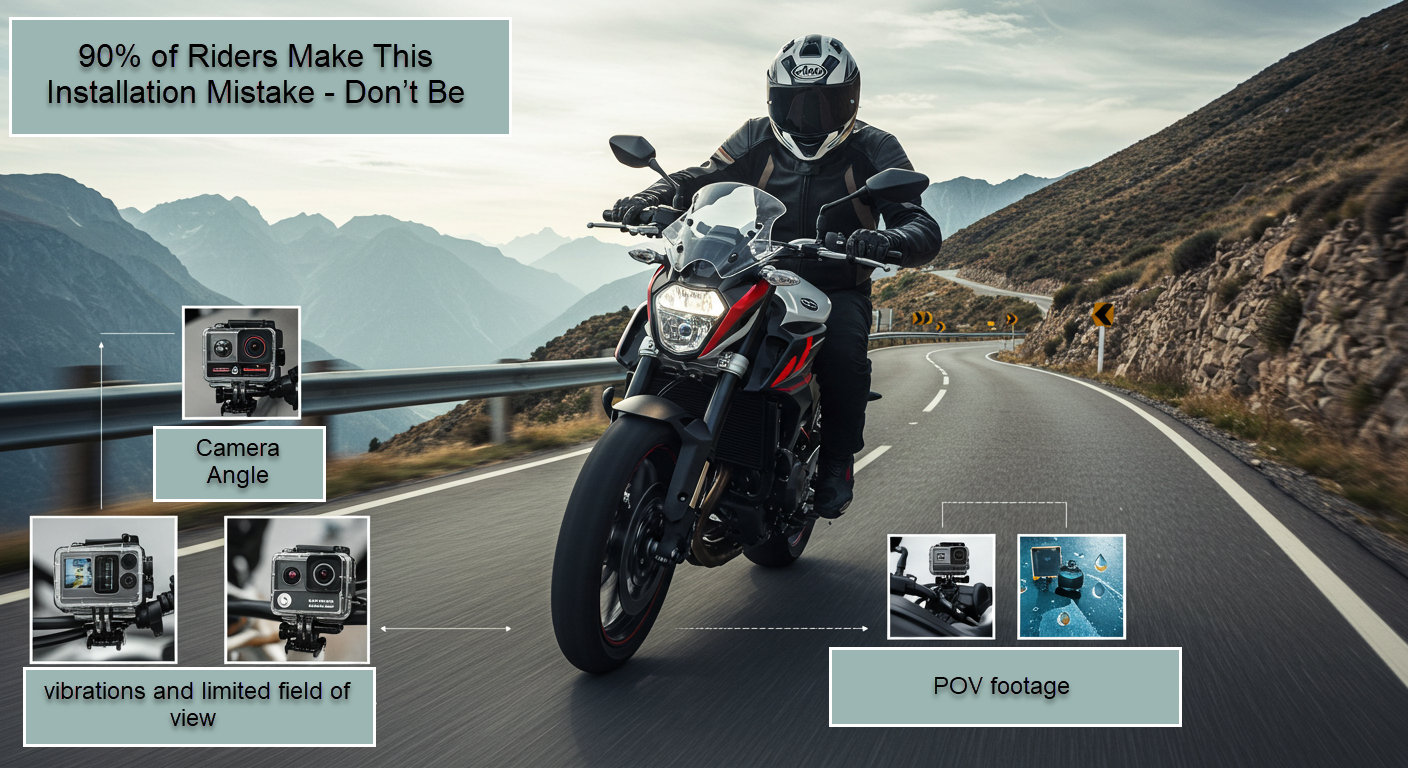Fix common motorcycle camera setup issues with these expert tips.
Table of Contents
Introduction
Imagine this: You just installed your motorcycle camera, excited to capture your ride. But when you review the footage, it’s shaky, tilted, or capturing more of the sky than the road! Sound familiar?
If you think installing a motorcycle camera is as simple as slapping it on and hitting the road, think again! 90% of riders make a critical installation mistake that renders their footage useless in crucial moments. Whether it’s blurry recordings, unstable mounting, or poor visibility, a single wrong step can defeat the purpose of your camera.
In this guide, we’ll uncover the biggest mistake riders make when installing their motorcycle cameras and, more importantly, how you can fix it today!
The Big Mistake Riders Make When Installing a Motorcycle Camera
Most riders assume any camera position is fine as long as it records. But here’s the truth:
Incorrect camera placement ruins footage, makes details hard to see, and may even make your footage useless in case of an accident.
Why is Incorrect Mounting a Big Deal?
- Wrong angles lead to footage that misses critical details (e.g., license plates, road signs).
- Unstable mounting causes vibrations that make video playback blurry.
- Poor positioning results in obstructed views (e.g., too much bike, not enough road).
- Legal concerns: Some positions violate local traffic laws.
Real-World Example: A Costly Mistake
John, an experienced rider, installed his camera on his handlebar. After a minor collision, he reviewed his footage to prove the other driver was at fault. But his camera only captured his speedometer and the sky! The crucial details of the accident? Completely missing. Don’t let this happen to you!
Let’s dive into five foolproof solutions to install your motorcycle camera the right way.
Solution #1: Choosing the Right Mounting Position
Helmet, handlebar, or chest mount? Here’s the truth: Not all positions are equal! The best choice depends on what you want to capture and the level of stability needed.
The Best Mounting Positions
- Helmet Mount: Best for POV footage but may violate laws in some areas.
- Handlebar Mount: Stable but prone to vibrations and limited field of view.
- Chest Mount: Ideal for balance but requires a secure harness.
🚀 Pro Tip: Perform a 30-second test ride and review footage before committing to a mount position.
Solution #2: Securing the Mount Properly to Reduce Vibration
Loose mounts = shaky footage.
How to Fix It
- Use high-quality adhesive mounts instead of cheap alternatives.
- Add anti-vibration pads to absorb shocks.
- Perform a “wiggle test”—if your camera moves, it’s too loose!
Solution #3: Adjusting the Camera Angle for Maximum Visibility
Avoid the dreaded “sky cam” mistake!
The Perfect Camera Angle
- Tilt the camera 15° forward to ensure a balanced view of the road.
- Check footage on a smartphone preview to see real-time framing.
- Make adjustments based on day vs. night conditions for clarity.
Solution #4: Ensuring Proper Wiring for Power & Weather Resistance
Don’t let power issues ruin your ride!
Key Installation Tips
- Hardwire your camera for uninterrupted recording.
- Use waterproof cable routing to protect against rain.
- Secure loose wires to prevent snagging or interference with riding controls.
Solution #5: Testing Your Setup Before Hitting the Road
Never assume it’s perfect without testing!
The Test-and-Adjust Method
- Ride for 5 minutes, review footage, adjust.
- Check for vibration issues before longer rides.
- Run a night test to see if visibility holds up.
Conclusion
Now you know the #1 mistake most riders make when installing their motorcycle cameras—and how to avoid it!
✅ Check your camera mount.
✅ Adjust angles before a ride.
✅ Test footage in different conditions.
Have you experienced camera installation issues before? Drop a comment below and share your best setup tips!
FAQs
1. What is the best place to mount a motorcycle camera?
The best place depends on your priority: Helmet for POV shots, handlebar for stability, chest for balance.
2. How do I reduce vibration in my motorcycle camera?
Use anti-vibration pads, ensure a tight mount, and avoid placing it on loose parts of your bike.
3. Can I use a motorcycle camera at night?
Yes! Adjust your camera angle, brightness settings, and use external lighting for the best results.
4. Is it legal to mount a camera on my helmet?
Check local laws, as some regions prohibit helmet-mounted devices due to safety concerns.
5. What’s the easiest way to test my motorcycle camera setup?
Take a 30-second test ride, review footage, and adjust as needed before a full trip.

